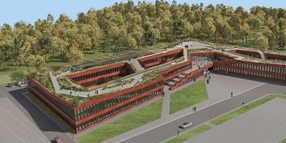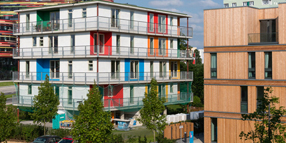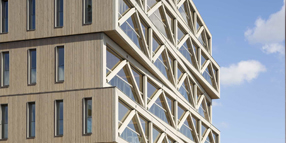Reburg is committed to reversible buildings! These buildings are designed and assembled in such a way that they are easily disassembled into smaller independent parts or components. This can be done by a professional building stock manager, but in some buildings – such as in Pangaea Palace – it might also be done by the building users themselves, through Do-it-Yourself (DIY) building kits.
Reversible buildings can be adapted to changing user needs and requirements, and also facilitate the reuse of building components in the same building(s) or other applications. By doing so, material resources are used in a highly productive way: waste is avoided and the life span of building components is extended. This is sometimes also referred to as ‘Design for Change’.
To make reversible building a reality, the use of reversible connections is imperative! Reversible connections are often dry connections such as bolts and screws, but Velcro and lime mortar can also be used. In contrast to glues, cement mortar and welds, reversible connections allow for non-destructive disassembly.
Reversible building design is not restricted to new buildings, it is also applicable in refurbishment projects, as discussed in Pangaea Palace. Nor is reversible building design restricted to new building products. Recovered products can also be reused - as described in the EduPlay Center. Finally, reversible buildings can be made of materials that can be recycled and/or are bio-based.
In order to guide building (system) designers and product developers to create reversible building solutions, reversible building design protocols are needed to improve the reuse potential and transformation capacity of buildings and its parts. More information on these protocols can be found onthe BAMB 2020 website.



